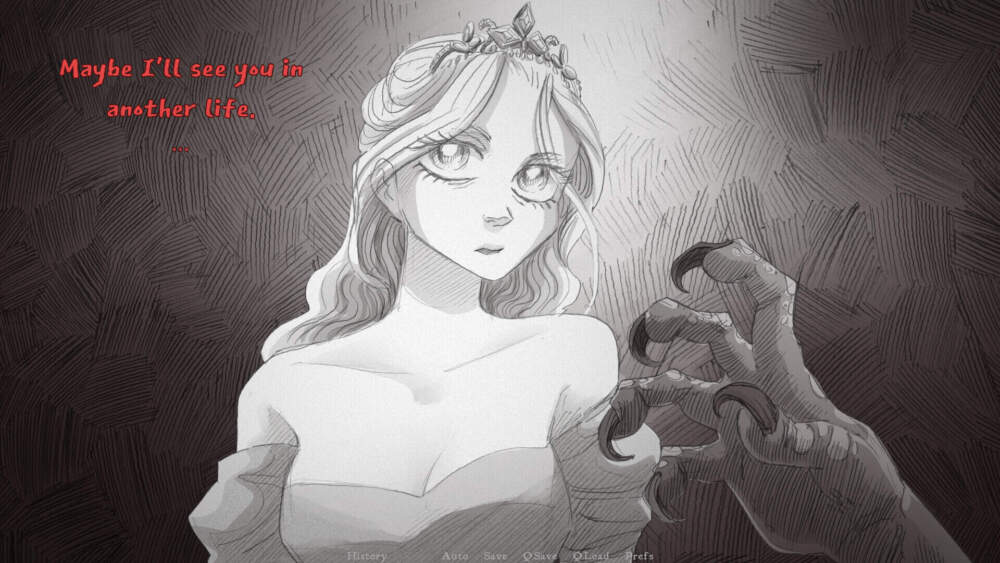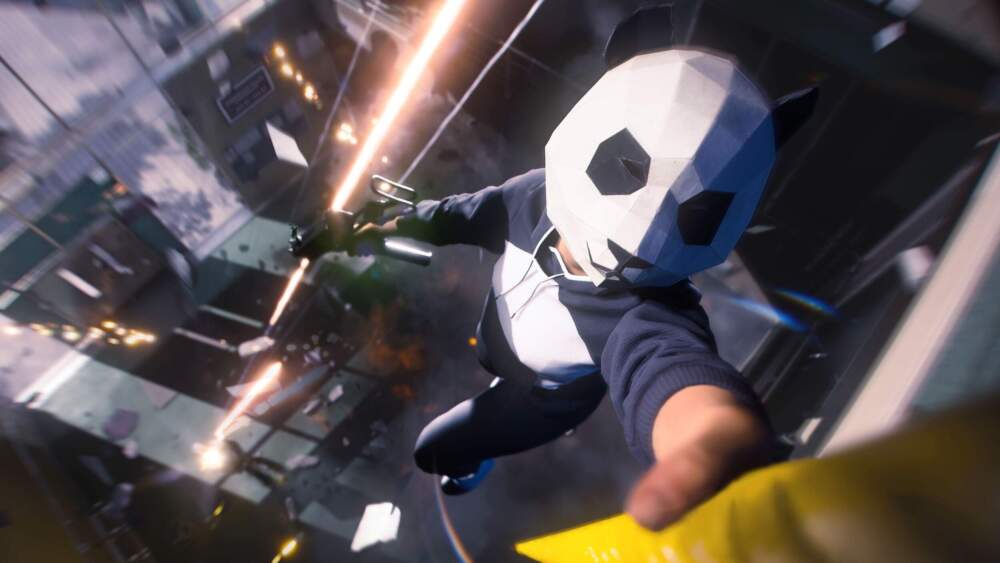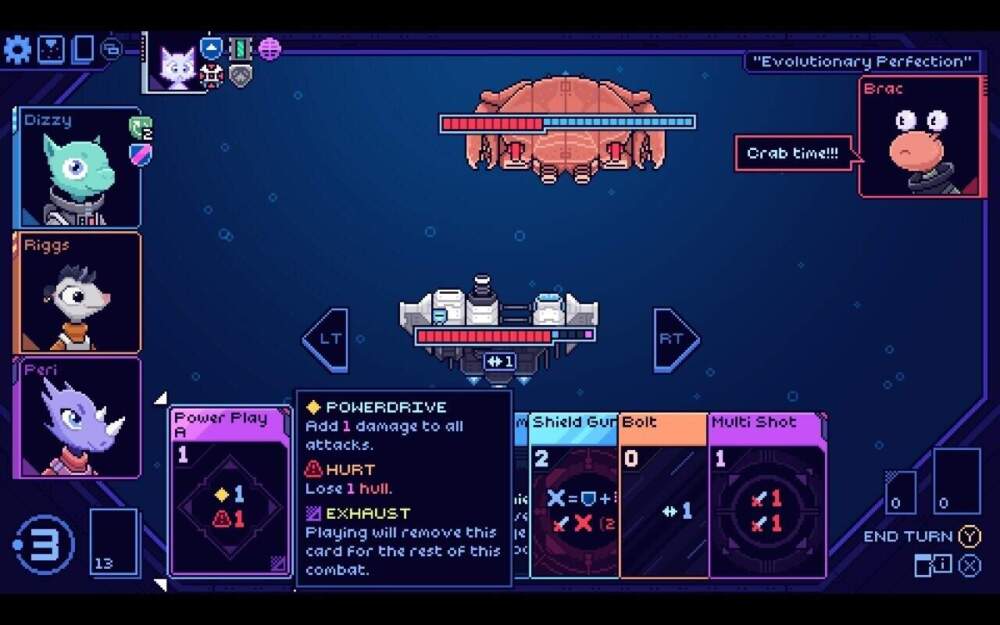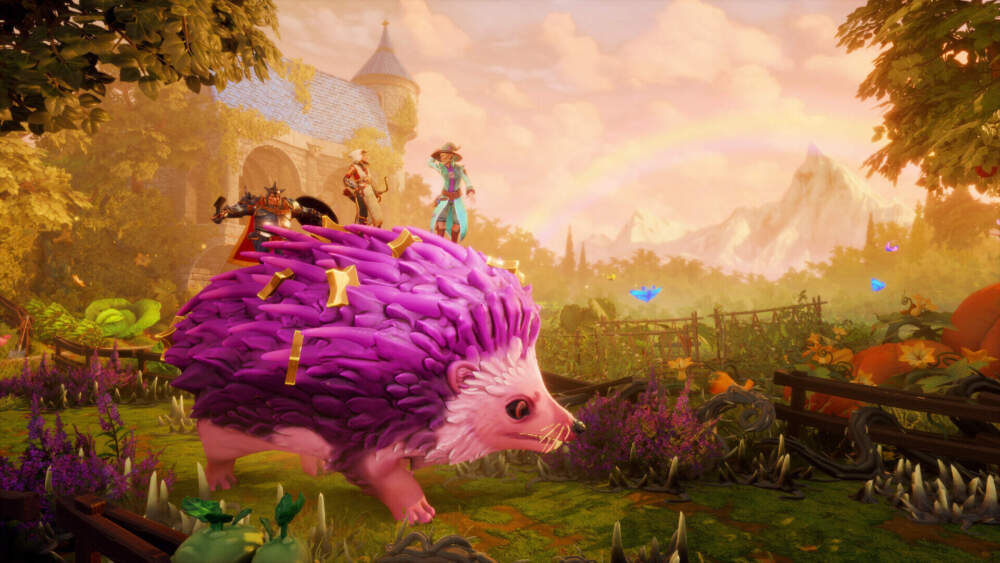Advertisement
5 video games we missed in 2023

2023 brought so many great games that despite rounding up nearly 100 of them on NPR’s best-of list, we still missed plenty.
NPR colleagues Becky Brown, Eric Rodriguez and I caught up with some of the most notable — from tiny indies to an innovative challenger in the multiplayer shooter scene. You’ll hear from Brown and Rodriguez first, and then from me:
‘Slay the Princess’
It's difficult to praise “Slay the Princess” without spoiling it. I’m going to try to be oblique, but you’ve been warned.
This is a game about relationships. In real life, you make decisions all the time that subtly, imperceptibly change you and the people around you. “Slay the Princess” extrapolates those decisions to their most extreme ends. Your choices will change both the eponymous princess and your attitudes, your mind, your body and the land itself. You'll make what you thought was a simple choice, only to realize from the princess’s behavior and your internal monologue that there was nothing simple about it. That decision meant something about who you must have been to have made it, and whoever or whatever she is now, well — that's her response. And together, you'll have to decide if you can live with that choice, quite literally.
The journey of this game is incredible — Art! Music! Sound design! Voice acting! Dialogue! — but its destination left me cold. Right at its end, the writing takes a huge, drunken swig of existential ambiguity, vomits out a poorly worded debate for/against killing death, and asks you to make a final decision with incomprehensible stakes completely unrelated to the rest of the game. Video game storytelling habitually falls back on the last-act crutch of killing the unknowable, but in a game about violent, kaleidoscopic intimacy, where horror extends the human experience but doesn't ignore it, closing the story with an apocalyptic JRPG-final-battle is a disappointing rejection of what makes the game excellent.
But the rest of the experience is beyond worth your time. It's as sharp and compact as its pristine blade.
— Becky Brown, audio engineer
‘The Finals’

Released in the last weeks of 2023, “The Finals” surprised the free-to-play scene with its refreshing take on team-based competitive shooters. Presenting itself as a glitzy Las Vegas gameshow, it throws teams of three together to fight it out in arenas set in dazzling yet destructible environments. The winner is the first to score enough cash by controlling or stealing strategic objectives before time runs out. Players can customize their own light, medium or heavy characters, each sporting unique unlockable abilities, weapons and gadgets.
These varied styles encourage experimentation and add a strategic meta layer that makes the game shine. From demolishing entire buildings with explosives to intense firefights with flamethrowers to chasing down enemies with nothing but a Hulk smash and a prayer, the gameplay will always keep you on your toes. Overall, while currently lacking mode diversity to choose matches from, “The Finals” has plenty to offer a casual or competitive first-person shooter gamer. I dare say it may even have a future in the eSports arena.
— Eric Rodriguez, manager, digital philanthropy
‘Cobalt Core’

I’ve summarized “Cobalt Core” as “FTL” meets “Slay the Spire.” It’s a card-based roguelike, where you’ll pilot your spaceship from dogfight to dogfight until you make it to the final boss — the titular Cobalt. Each time, you’ll crew your vessel with three anthropomorphic animals that come with their own unique cards. Goat Isaac’s cards assemble helpful drones, opossum Riggs’ will zip you around, rhino Peri’s pack a heavy punch — and you’ll unlock more characters and discover more synergies as you go.
With writing as snappy as its gameplay, “Cobalt Core” rewards a crew member by restoring a forgotten memory each time you complete a run. Over time, you’ll piece together how these unlikely allies ended up in a time loop and how they might break free. It’s the best card-based video game I’ve played in years, and may have one of the best-integrated narratives I’ve seen in the genre — beat out only by 2021’s “Inscryption.”
‘In Stars and Time’

“In Stars and Time” shakes up a standard JRPG with another time loop story — one that’s committed to putting you through an emotional crucible. It begins innocuously enough. Rag-tag party of loveable scamps? Check. Warm-hearted citizens in need of saving? Check. Enigmatic villain roosting in a dark fortress? Check.
Protagonist Siffrin spends an idyllic day readying for what they think to be the final battle, only to be crushed by a boulder. To their surprise, they wake back up the day before, everyone else none the wiser. Guided by the mysterious and aptly named “Loop,” you’ll steer Siffrin through even more dastardly traps and deadly enemies throughout dozens of these Groundhog Days.
Then the desperation sinks in. Ultimate victory eludes you — Siffrin’s stuck repeating the same day, solving the same puzzles, hearing the same conversations, fighting the same adversaries (and since this is an RPG, Siffrin keeps leveling up — far outstripping the rest of the party). You’ll soon unlock a button to have Siffrin zone out and fast-forward through familiar scenes, even as you test increasingly reckless means of escape.
Unlike other games like “The Outer Wilds” where you can unravel a temporal mystery however you wish, “In Stars and Time” forces you to play through story beats in a particular order. Dialogue choices that advance particular theories won’t show up until you’ve put in the legwork. Sometimes you’ll lose battles just to learn how to win later. Sometimes winning isn’t even the point.
If “In Stars and Time” was half as cute or charming, this maddening format would wear out its welcome. It’s meticulous in how it gets you to sympathize with Siffrin and how it uses game mechanics to simulate the swings from hope to nihilism that every time loop story indulges. I just wish it could arrive at its glorious catharsis in fewer hours — that it could excavate its emotional depths as efficiently as “Undertale,” the generation-defining indie it so clearly emulates. As such, I’m very glad I finished the game, but would only recommend it to people ready to take the plunge.
‘Trine 5: A Clockwork Conspiracy’

I’ve been playing Trine games since I picked up the second title in a Humble Bundle and had lofty hopes for this latest edition. Unfortunately, it failed to deliver the exquisite co-op experience I expected.
Let me explain. Trine’s about three heroes armed with either a sword, a bow or the peculiarly niche magic to summon planks and boxes. While you can toggle between each while playing solo, it excels with three players and thus perfectly fits my needs for a game to share with my wife and brother-in-law. “Trine 4: The Nightmare Prince” proved to be a puzzle action delight. “Trine 5,” by contrast, felt poorly optimized for co-op.
Multiplayer levels are trickier than their standard versions — each puzzle often takes more steps to make sure everyone has something to do. All well and good, except that sometimes the solutions were so obtuse that I had to replay the same level alone just to move the story forward — a story that starts strong, by the way, only to limp to the finish line over what feels like an obligatory five acts. As wondrous as the art direction was, the game never dazzled enough to quite make up for these hours of frustration. If you’re looking for a stellar three-player game, stick to “Trine 4.”
